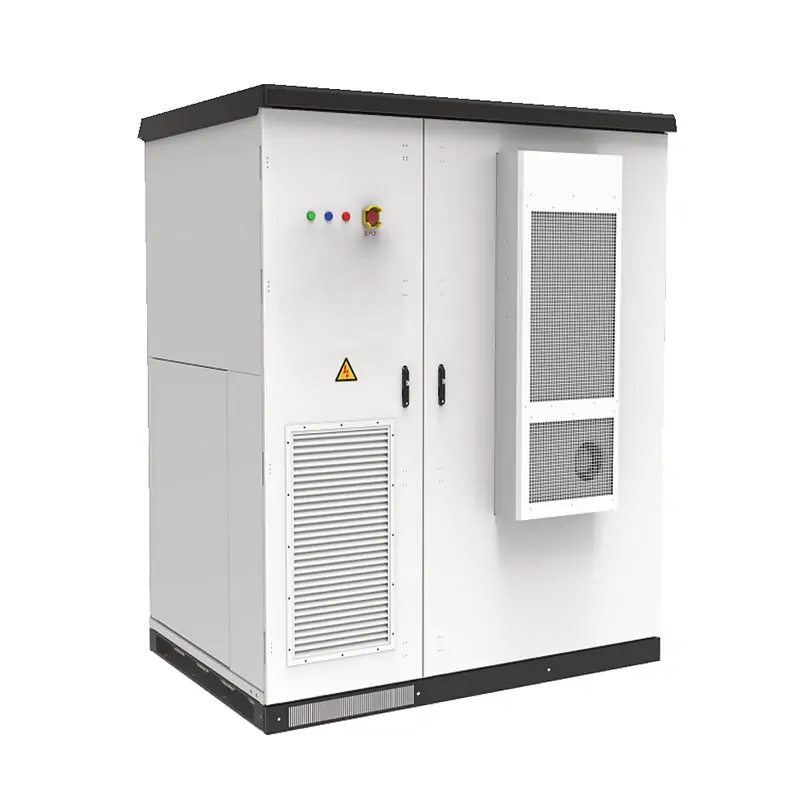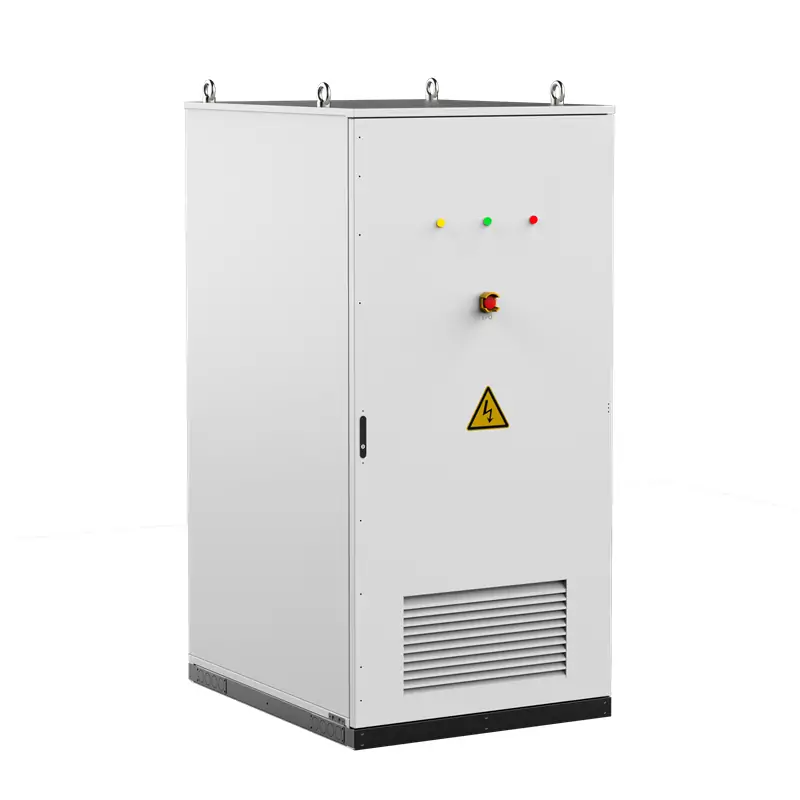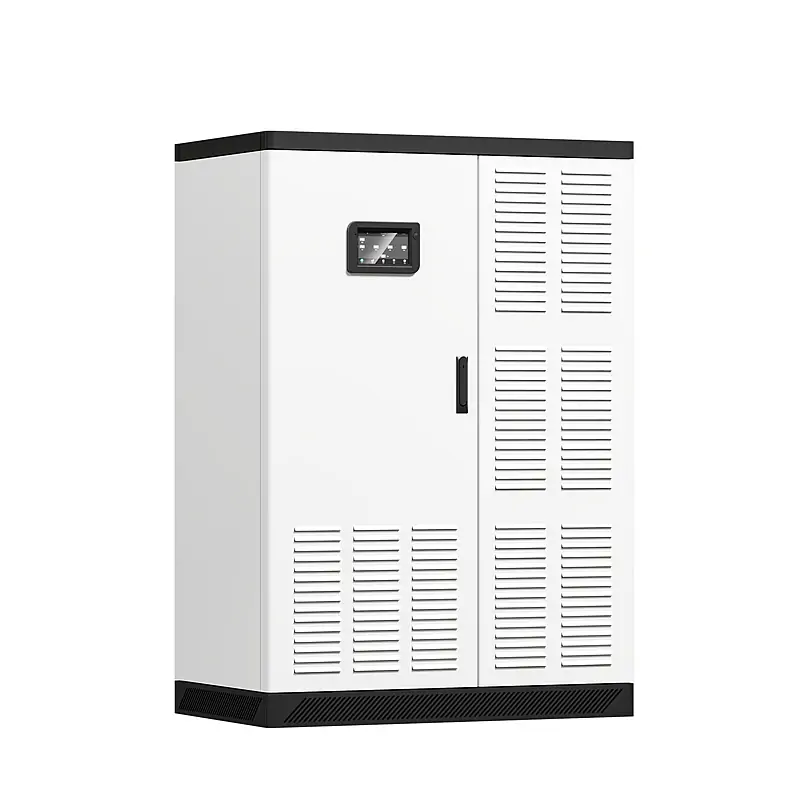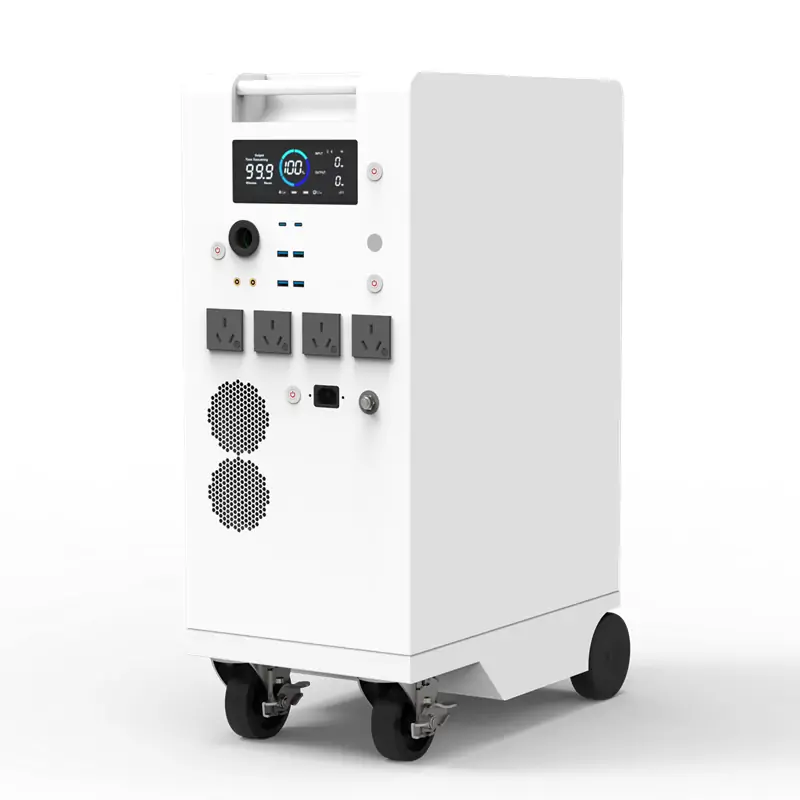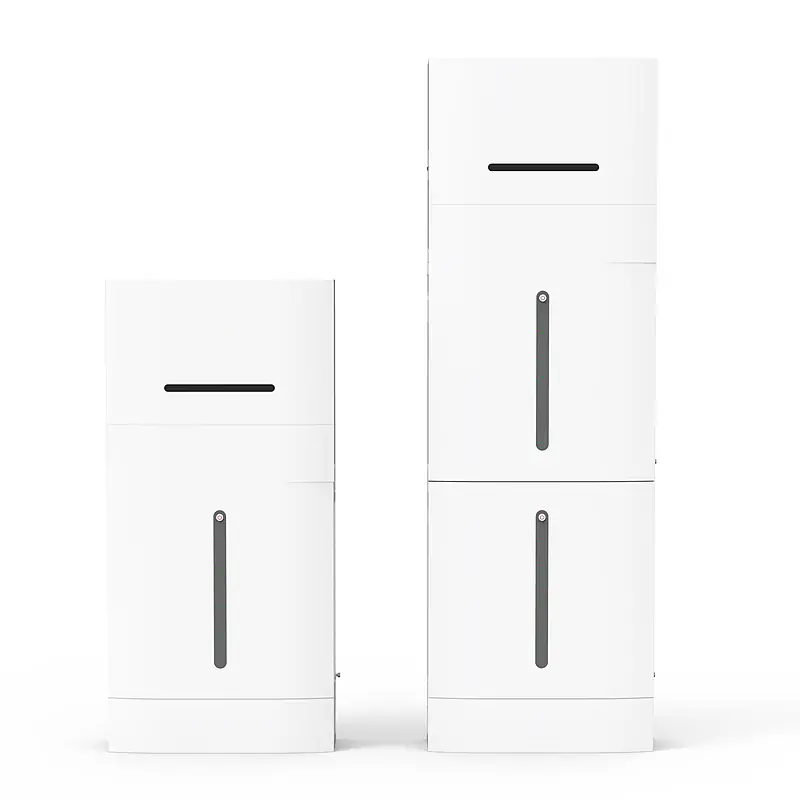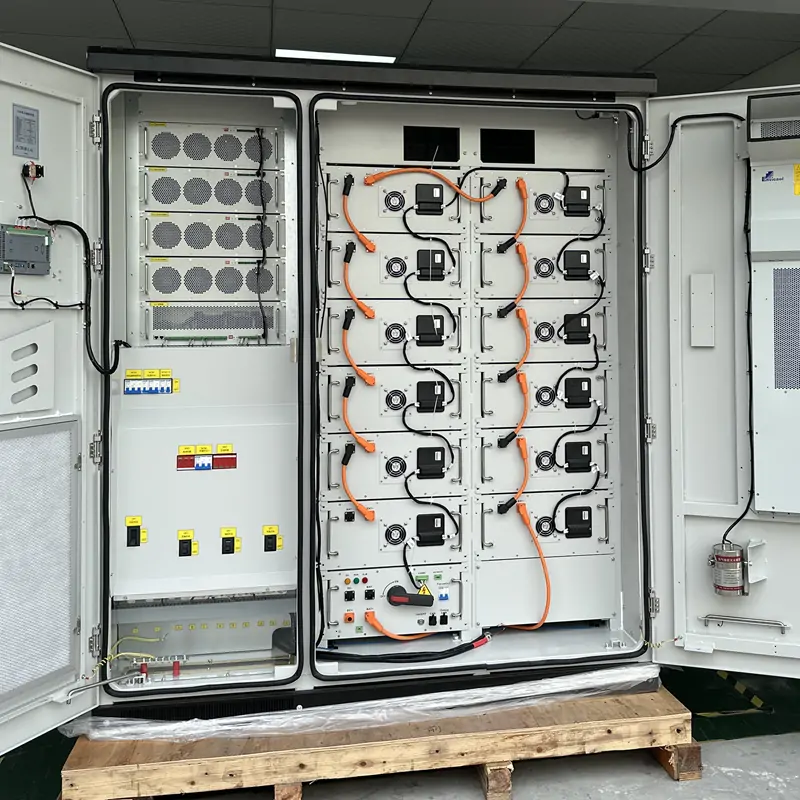In today’s society, electricity has become an indispensable part of people’s lives and work. Whether in homes, factories, or large power plants, a continuous and stable power supply is a powerful guarantee.
With the accelerated global energy transition and the continuous iteration and development of energy storage products, all in one energy storage system, as a highly integrated solution, offer users a more economical and convenient new option.
Let’s learn more about all in one energy storage system(all in one ess)!
What is All in One Energy Storage System ?
All in one energy storage system (all in one ESS) is a highly integrated smart energy system that integrates multiple core energy components, such as batteries, power storage converters (PCS), and energy management systems (EMS), into a single cabinet or system, eliminating the need for multiple separate components required in traditional systems. This complete energy solution is designed to efficiently capture, store, and distribute electricity.
Unlike traditional distributed or modular energy storage systems that require separate installation and configuration of batteries, inverters, and control systems, all in one energy storage systems are integrated and pre-tested in the factory and can be installed directly, minimizing on-site engineering work.
From a technical architecture perspective, all in one energy storage systems can be divided into two types: DC-coupled and AC-coupled. In a DC-coupled architecture, the photovoltaic modules are directly connected to the DC bus via a DC/DC controller, and the electrical energy only needs to be converted once before being stored in the battery, significantly reducing energy loss. AC-coupled systems, on the other hand, offer high flexibility and are suitable for users with existing photovoltaic systems, easily upgrading them to more comprehensive energy storage solutions.
Core Components of All in One Energy Storage System
Batteries: The core of energy storage. Lithium iron phosphate batteries are typically used to ensure safety and lifespan.
PV DC/DC Controller: Optimizes the unstable DC output from solar panels, ensuring the PV system always generates maximum power.
Power Storage Converter (PCS): The “heart” of the system, enabling bidirectional conversion between DC and AC power and controlling the charging and discharging processes of the batteries.
Energy Management System (EMS): The “brain” of the system, coordinating and controlling the energy flow between PV, energy storage, and the grid, controlling and optimizing the operation of the entire system, and executing intelligent strategies.

Features and Advantages of All in One Energy Storage System
High Integration, Convenience and Ease of Use
The all in one ess adopts an “ALL IN ONE” design concept, pre-installing multiple components in the same cabinet or system. This integrated design ensures easy installation with fewer connecting components. Furthermore, the equipment is pre-assembled and pre-calibrated at the factory, significantly reducing on-site installation and wiring work, minimizing engineering labor, thus shortening installation and commissioning time and reducing complexity. It achieves “plug and play,” saving time and installation costs.
In addition, the compact architecture of the integrated unit optimizes layout and saves space, making it ideal for small or modular deployments.
Intelligent and Efficient, Optimizing Electricity Usage
All in one energy storage system typically have built-in intelligent systems, making them simple and convenient to use and maintain. Through their built-in AI-driven energy management systems, the system can intelligently schedule power, optimize energy use and storage, improve energy efficiency, reduce waste, and lower operating costs.
For example, they can charge during off-peak hours when electricity prices are low and discharge during peak hours when prices are high, thus saving on electricity bills; they can also prioritize the use of photovoltaic power generation, improving the utilization rate of green energy.
Safe and Reliable, Ensuring Power Supply
The all in one energy storage system features seamless switching. When grid power is suddenly interrupted, the system can switch to off-grid mode within milliseconds, using the energy storage batteries to continue powering critical loads as a backup power source. Intelligent switching enables seamless transitions between the grid, PV, and energy storage, ensuring uninterrupted production and operations and reducing damage to equipment caused by sudden power outages.
Regarding safety, firstly, the design and factory testing of the all in one ESS reduce the number of components requiring on-site connection, lowering the failure rate. Secondly, in addition to the safety protection measures used in traditional energy storage systems, the all in one ESS uses an AI-driven management system for predictive maintenance, proactively preventing problems and responding quickly, significantly improving safety compared to traditional solutions.
Green, Low-carbon, and Environmentally Friendly
By fully utilizing solar energy and reducing reliance on traditional fossil fuels, carbon emissions are effectively reduced, making it an environmentally friendly energy solution.
In addition to the above advantages, some all in one energy storage systems also feature a significant modular design. Users can adjust, add or remove modules according to their own needs, allowing for flexible configuration. This modular design not only facilitates spare parts and lifecycle maintenance for customers’ power plants but also makes replacing faulty modules easier, greatly improving system reliability.
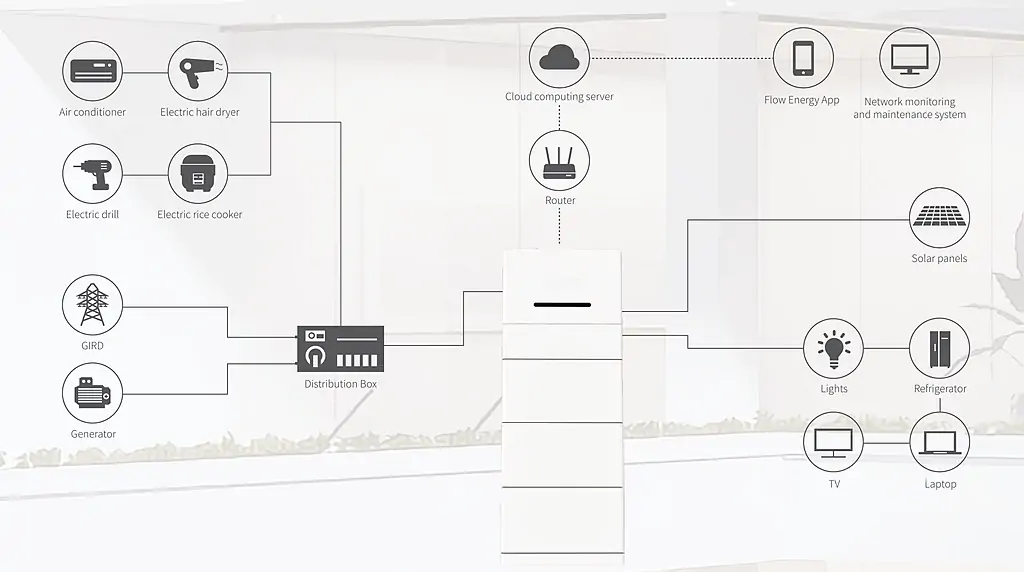
Main Applications of All in One Energy Storage System
The flexibility of all in one energy storage system allows them to adapt to various power environments, from homes to factories, from cities to remote areas.
Home Use
In homes, all in one energy storage system can store electricity during off-peak hours and discharge it during peak hours, helping to balance the household’s electricity load and providing emergency backup power during power outages, thereby reducing dependence on the power grid.
Industrial and Commercial Applications
In industrial and commercial applications, all in one energy storage systems demonstrate significant economic value. These systems can implement peak shaving and valley filling strategies, reducing peak demand electricity costs and overall electricity costs for businesses. Furthermore, they can serve as backup power for production lines, preventing losses due to unexpected power outages. They are widely applicable in industrial parks, commercial centers, data centers, supermarkets, farms, office buildings, and other similar settings.
Photovoltaic-Storage Charging Stations
In photovoltaic-storage charging station scenarios, the all in on ESS can achieve a closed loop of “new energy vehicles charging by new energy batteries.” Rooftop photovoltaic power generation prioritizes supplying charging piles, with excess energy stored in energy storage batteries, greatly mitigating the impact of high-power charging on the power grid.
Off-grid and Remote Areas
For islands, pastoral areas, and mining areas where the power grid is unavailable or extremely unstable, all in one energy storage system can be seamlessly integrated with diesel generators to build a stable microgrid, maximizing the utilization of solar energy, reducing expensive diesel consumption, and ensuring basic power supply.
Currently, residential and commercial/industrial applications are the most common uses of all in one energy storage systems. Let’s take a look at the differences between the two.

Differences between Residential and Commercial All in One Energy Storage System
Although residential and commercial all in one energy storage systems are based on the same fundamental principles, they differ significantly in power output, technical requirements, and functional design.
Power and Capacity
Power and capacity are the most obvious differences between the two. Residential all in one energy storage systems typically have power ratings below tens of kilowatts and capacities ranging from a few kWh to tens of kWh. Commercial and industrial all in one energy storage systems, on the other hand, have power ratings from tens of kilowatts to megawatts and capacities reaching hundreds of kWh or even MWh.
System Architecture
System architectures and levels of integration also differ. Residential all in one energy storage systems prioritize high integration, combining inverters, batteries, and controllers into a compact enclosure for aesthetics and quiet operation. Commercial and industrial systems, on the other hand, emphasize modular design and flexible expansion, typically employing cabinet or containerized designs and integrating more complex temperature control systems.
Core Functions
The core functions and performance focuses differ. Residential systems emphasize increasing solar self-consumption rate and ensuring basic power supply during power outages, with some supporting energy management and cost optimization via an app.
Commercial systems prioritize peak shaving and valley filling to achieve electricity cost savings and need to support complex applications such as microgrid construction and participation in virtual power plants (VPPs). For systems requiring protection against damage to precision equipment from sudden power outages, STS modules are needed to achieve millisecond-level power switching. Commercial systems have requirements for power quality (such as reactive power compensation), effectively adjusting the power factor to improve power quality for industrial and commercial users.
Safety Design
The complexity of safety designs also varies. Home systems emphasize home environmental safety, featuring battery pack-level safety protection, intelligent fire prevention systems, and an appliance-like design.
Commercial and industrial safety systems are more complex, incorporating multi-level electrical protection, a full liquid cooling system, and multi-point fire suppression systems, among other industrial-grade safety features.
Installation and Maintenance
For residential installations, the design is minimalist, prioritizing drill-free and quick installation. Users can monitor the system via an app, making maintenance simple.
Commercial installations are more complex, requiring professional engineering deployment and potentially involving hoisting, foundation pouring, etc. They typically support remote monitoring and modular replacement to reduce maintenance costs and downtime.

Selection and Recommendation of All in One Energy Storage System
Faced with a wide variety of all in one ESS products on the market, consumers need to make wise choices based on their own needs and application scenarios.
Key Considerations for Home Users
Security should be the primary consideration for home users. It’s also crucial to clarify the scope of backup power needs: is it for whole-house backup or only for critical loads?
For users whose power demands may increase, scalability should also be considered. For example, if there are plans to add an electric vehicle or expand capacity in the future, choosing a model that supports modular expansion will offer greater flexibility.
Key Selection Criteria for Industrial and Commercial Users
Conduct detailed load analysis to accurately understand the enterprise’s electricity consumption curve and peak-valley price difference. Assess the load-bearing capacity, area, and transportation conditions of the installation site.
In addition to basic peak-valley arbitrage, actively explore the possibility of participating in demand response, virtual power plants (VPPs), etc., to obtain additional revenue. Focus on evaluating the EMS’s intelligent dispatching capabilities, system efficiency, and the compatibility of products and solutions.
Below are some of our residential and commercial all in one energy storage systems. Our products comply with UN, IEC, UL, CEC, and other certifications. We can not only provide you with standardized products, but also offer the best energy solutions tailored to your specific needs! Please contact us immediately if you have any needs!
Summary
In conclusion, all in one energy storage systems enable more people to utilize advanced energy storage technology, balancing convenience and performance in various application scenarios. Hopefully, the above information has given you a better understanding of all in one energy storage systems and will help you in making an informed choice!

